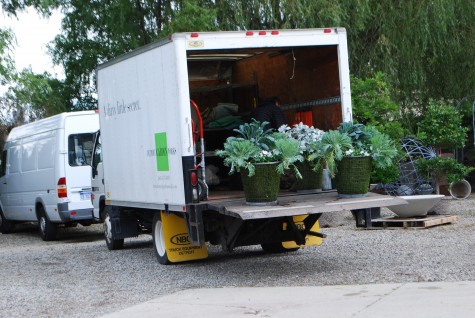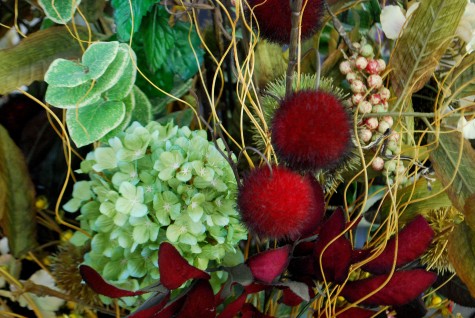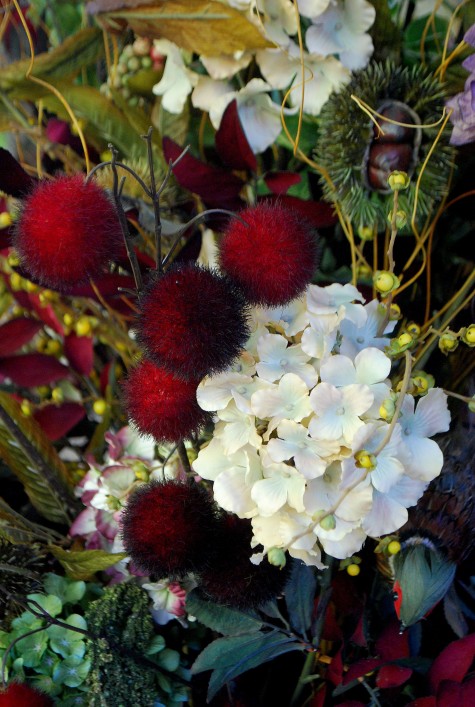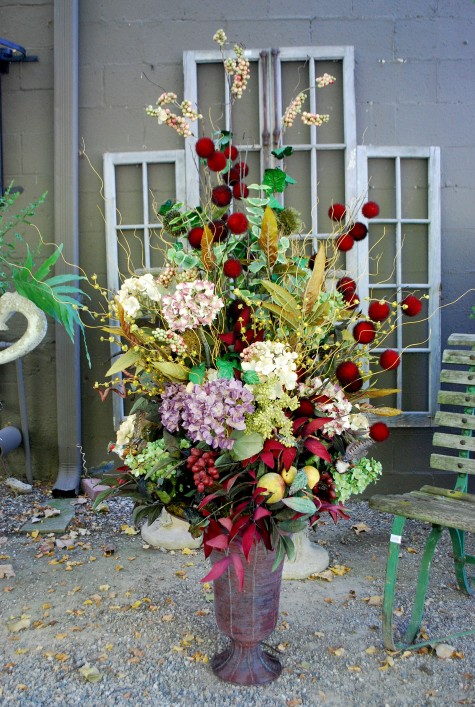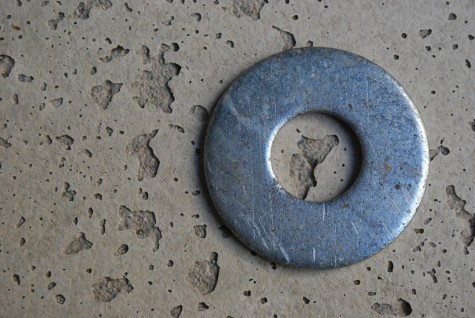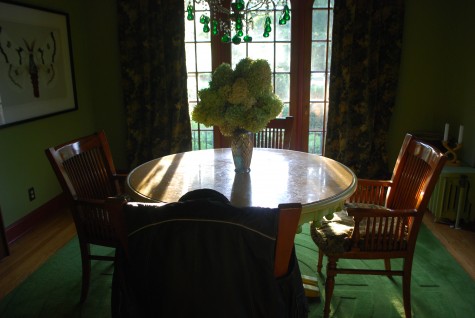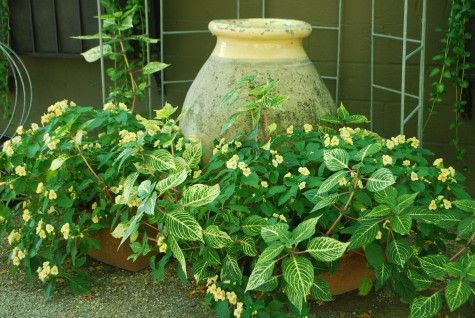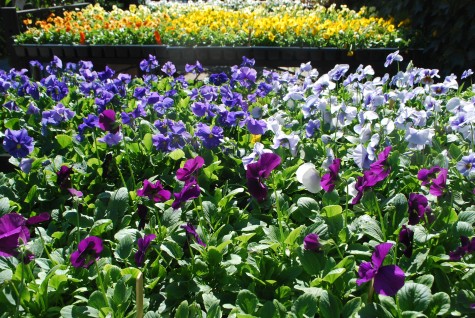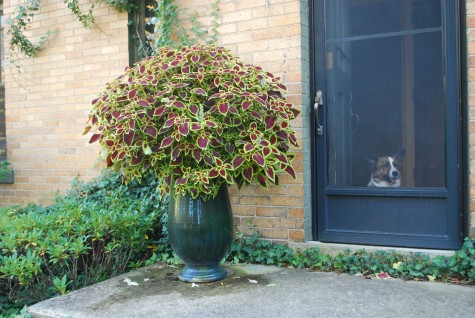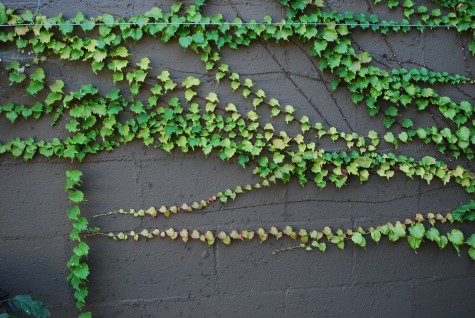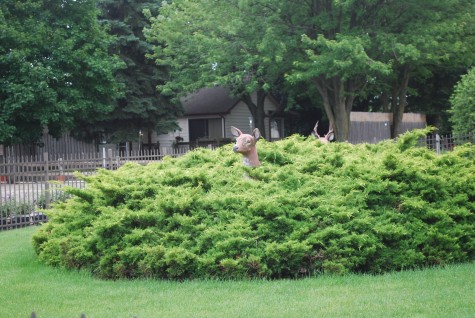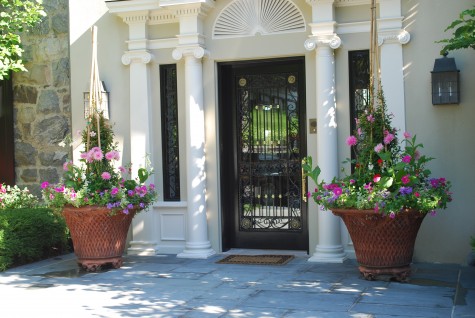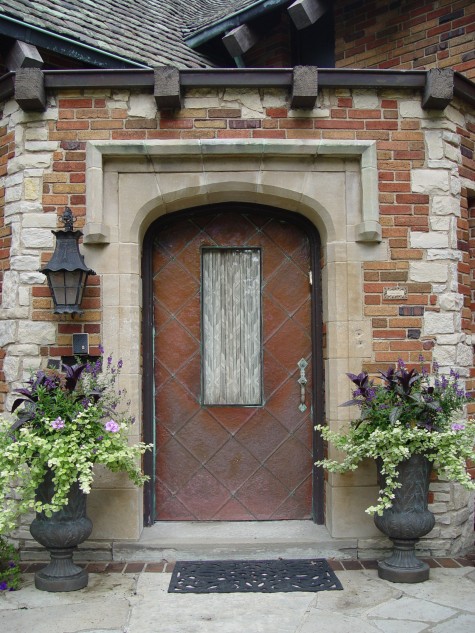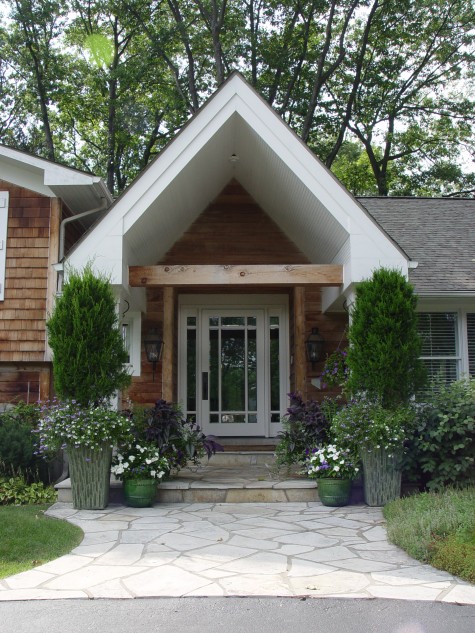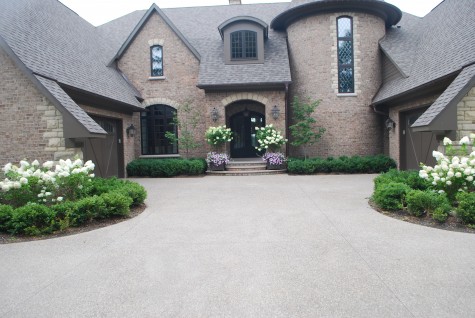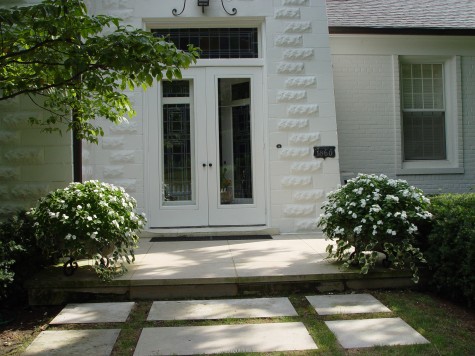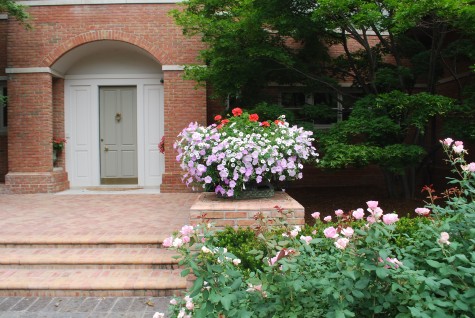Our fall plantings have begun in earnest this week; very cool night temperatures are a sure sign that fall is underway. My boston ivy wall has three distinctly dark red streaks in evidence in an ocean of green. More to follow on that story. A maple down the street is emphatically turning color. Speaking of emphatic, I like to plant big plants in the fall. The cool soil means that growth will be slow, especially in an exposed location. Scale is so important in any seasonal planting; in a good year, we have two months of fall. Start big; make yourself happy. Fall plantings do several things for the gardening psyche. When summer plantings get to looking like they are infected and going down from the cold, a fall planting can be robust and cheery. Fall pots can stretch and test your ingenuity, as the palette of suitable plants is vastly less than one’s spring choices. The cool weather means all of us are more energetic, enterprising, and tuned in. The mix-much like a cool jazz inprovization.
 Ornamental kale can be found in large sizes, and shrugs off the cold. The color only gets better as the temperatures decline. The tuscan kale I have had in the shop pots all summer will go on until very late in the fall. Good deal. If you are new to a planting that will span our fall, galvanized steel and steel wire buckets make great fall planters. They are relatively inexpensive, and they have that bushel basket look about them. Who can resist a bushel basket of apples, or a quarter bushel of new potatoes? These wire containers are particularly attractive; the moss sides makes this planting green from top to bottom. How the kale spills abundantly over the edge speaks to the time of the harvest. Lush in a different way than spring. A lush finish-the harvest ripening, maturing-the best part of the summer season.
Ornamental kale can be found in large sizes, and shrugs off the cold. The color only gets better as the temperatures decline. The tuscan kale I have had in the shop pots all summer will go on until very late in the fall. Good deal. If you are new to a planting that will span our fall, galvanized steel and steel wire buckets make great fall planters. They are relatively inexpensive, and they have that bushel basket look about them. Who can resist a bushel basket of apples, or a quarter bushel of new potatoes? These wire containers are particularly attractive; the moss sides makes this planting green from top to bottom. How the kale spills abundantly over the edge speaks to the time of the harvest. Lush in a different way than spring. A lush finish-the harvest ripening, maturing-the best part of the summer season.
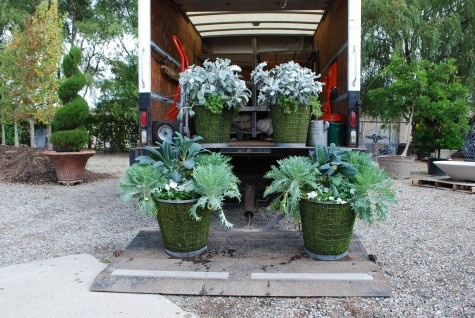 I think there is a gene that makes it a snap for some gardeners to expertly moss a basket. Others of us struggle with this job-me included. At Detroit Garden Works, we now use a florist’s moss mounted on a netted backing. This makes mossing very quick, and easy. This moss comes in a roll; drape the basket, and fill. Fill any number of bushel baskets with kales, pansies, twigs, grasses-whatever seems to be maturing in your garden or available at your farmer’s market. My most favorite stems of this season-the maturing pods of asclepias tuberosa-butterfly weed. Those pods-so beautiful.
I think there is a gene that makes it a snap for some gardeners to expertly moss a basket. Others of us struggle with this job-me included. At Detroit Garden Works, we now use a florist’s moss mounted on a netted backing. This makes mossing very quick, and easy. This moss comes in a roll; drape the basket, and fill. Fill any number of bushel baskets with kales, pansies, twigs, grasses-whatever seems to be maturing in your garden or available at your farmer’s market. My most favorite stems of this season-the maturing pods of asclepias tuberosa-butterfly weed. Those pods-so beautiful.
 Cirrus dusty miller has large felted silver leaves with great substance. They tolerate the cold well. The serrated dusty miller does just as well in fall pots, but looks better paired with cabbages, or bergenia. Dusty miller takes a long time to grow-should you be interested in cirrus, talk to your greenhouse grower now. This big leaved dusty miller deserves more attention. The drapy Angelina stays green all winter; it is a consummate professional of a plant. Whatever grows and stays green over my winter gets my attention.
Cirrus dusty miller has large felted silver leaves with great substance. They tolerate the cold well. The serrated dusty miller does just as well in fall pots, but looks better paired with cabbages, or bergenia. Dusty miller takes a long time to grow-should you be interested in cirrus, talk to your greenhouse grower now. This big leaved dusty miller deserves more attention. The drapy Angelina stays green all winter; it is a consummate professional of a plant. Whatever grows and stays green over my winter gets my attention.
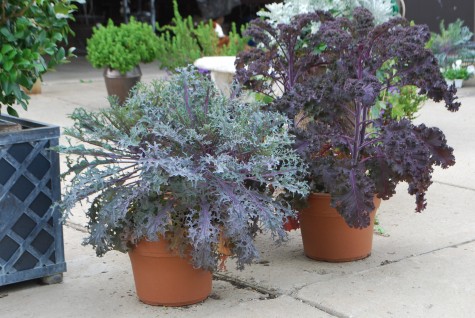 Ornamental cabbages and kales can be had of considerable size; I like my fall pots stuffed to overflowing. Buy big. Stuff as many plants as you can manage into your pots. The fall is fleeting-do not be late to the concert.
Ornamental cabbages and kales can be had of considerable size; I like my fall pots stuffed to overflowing. Buy big. Stuff as many plants as you can manage into your pots. The fall is fleeting-do not be late to the concert.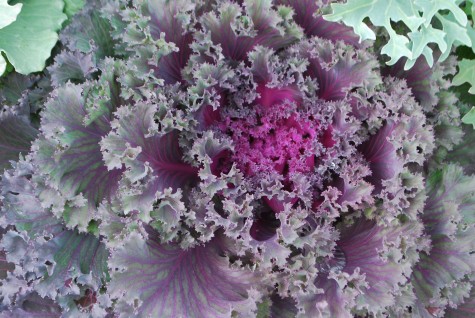
I do not mind the passing of the geraniums, the verbena, the impatiens and the coleus. To everything there is a season, yes? I am focused now on fall. What will I do?
 <
<
The hydrangea flowers are pinking from the cold-enjoy this. In much the same way that you reluctantly let go of spring and move into summer-celebrate the fall. Change is in the air. What is not to love about this season? I would advise-wake up and get ready.
